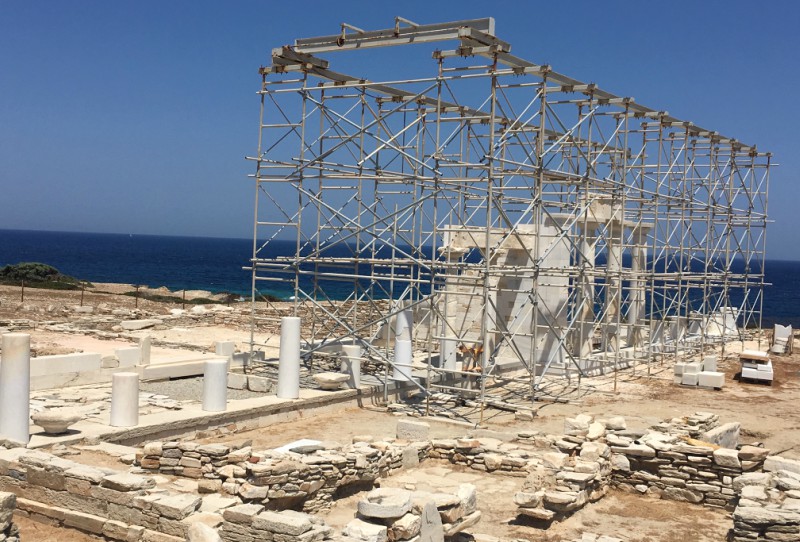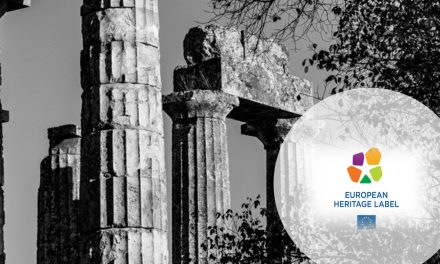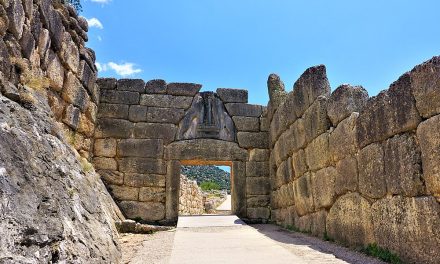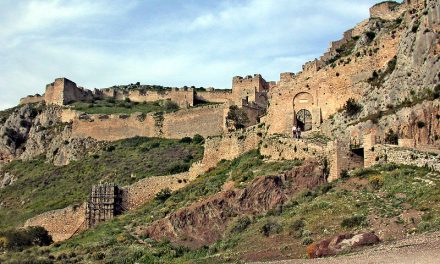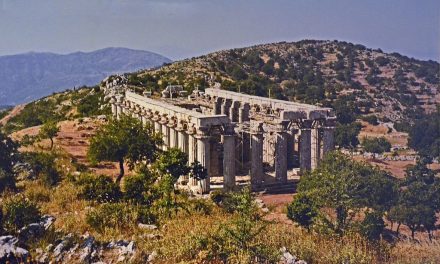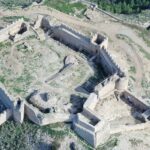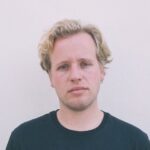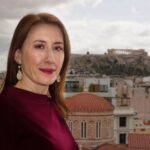Despotiko, a small island in the Cyclades, has drawn the attention of archaeology enthusiasts in recent years, after excavations uncovered a religious site of major significance, dating from the Archaic Period. The site encompasses a large temple dedicated to the Greek god Apollo along with other ceremonial buildings, and is now considered to have been of equal, if not greater, importance to the famous sanctuary of Delos. The excavation project is headed by Yannos Kourayos, a Greek archaeologist with vast experience and rich knowledge of the area.
Yannos Kourayos obtained his first degree in archaeology from the University of Florence in 1976, and a second degree in maintenance of antiquities from the Academy “Lo Sprone” in 1982. Partaking, whilst still a student, in numerous excavations in Italy and Cyclades, he now has thirty-two years of work experience on the island of Paros alone. He has been an archaeologist for the islands of Paros and Despotiko at the Ephorate of Antiquities of Cyclades from 1986 until now. From 2006 to 2010 he worked at the Ephorate of Prehistoric and Classical Antiquities in Voula and Vouliagmeni and he also holds the position of curator at the Archaeological Museum of Paros. He has also published four books on archaeology, among which is Paros – Antiparos – Despotiko, from Prehistory to Modern Times.
Kourayos began his excavation at Despotiko in the summer of 1997 but before him, the first exploration was led by archaeologist Christos Tsountas in the 19th century and another one was conducted by Nikos Zafeiropoulosin 1959. Kourayos discovered in 1997 an extensive archaic shrine devoted to Apollo, thitherto unknown from any written ancient source until then. These excavations in Mandra (Despotiko) have brought to light a vast religious complex devoted to Apollo which was completed in the Late Archaic Period. Religious activities are believed to have been taking place at the same site since the Geometric Period.
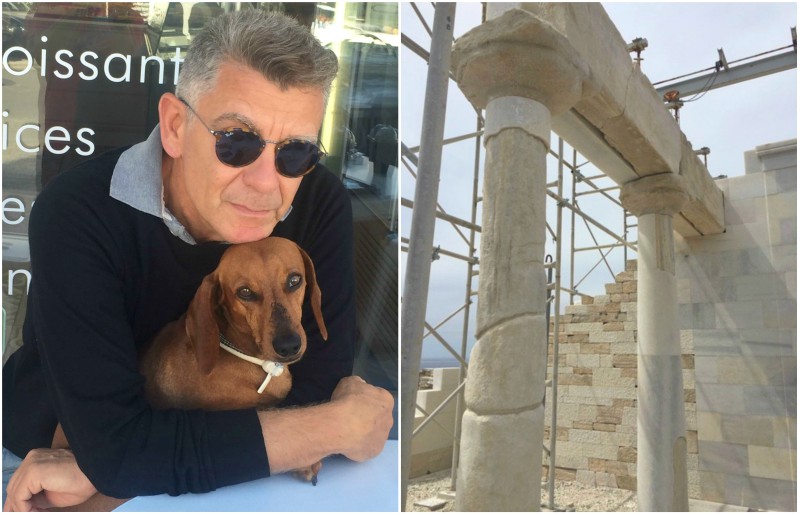 Despotiko
Despotiko
Despotiko is one of the three islets situated west of the island of Antiparos and is mentioned by Pliny the Elder and Strabo as Prepesinthos. It is in fact situated almost exactly at the centre of the Cyclades. The only way to visit the islet is by boat from Agios Georgios in Antiparos and it sits at just 700m off the coast, which makes it perfect for a quick visit during your stay in Cyclades. This islet has been uninhabited since ancient times, but current excavations indicate that there was possibly an isthmus that may have linked Despotiko and the other two islets with Antiparos until at least the Hellenistic period.
In the Archaic period, the people of Paros built a sanctuary in Despotiko devoted to the cult of Apollo, as well as his sister Artemis and the goddess Hestia. The reason behind the choice of this specific location for the religious complex probably lied in the effort to establish their dominance in the Aegean, especially as part of their rivalry with the island of Naxos. In the Classical period, the Athenian Miltiades, under the pretext that the people of Paros had supported the Persians during the Persian invasion of Greece, led an unsuccessful Athenian campaign against the island of Paros (which also encompassed Antiparos and Despotiko) which had been conquered by the Persians. The islet was also partially burnt down by French pirates in the17th century.
According to the archaeologists working on the site, the islet of Despotiko will be gradually turned into an open-air museum, as is the case with Delos, and it will become accessible to the public. Greek News Agenda interviewed* the head of the excavation, Yannos Kourayos, on the importance of the site as well as the challenges posed by this demanding task.
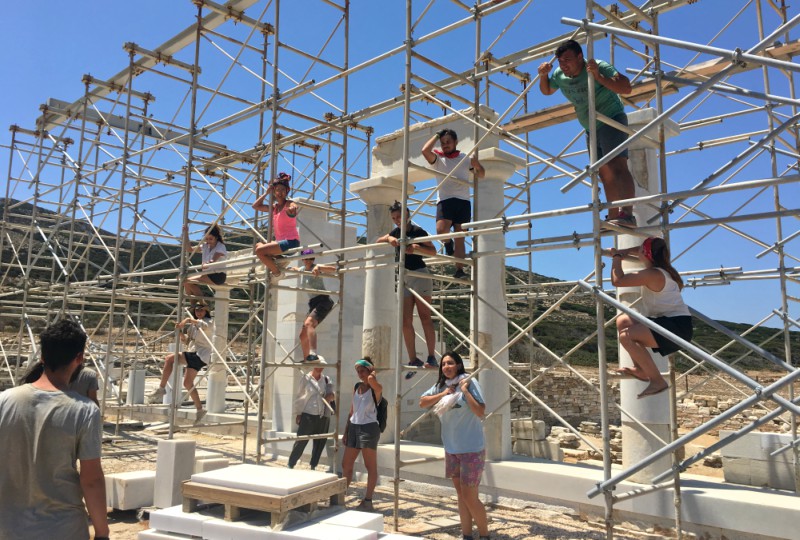 You seem to have a connection with the islands of Paros and Antiparos for over thirty years now; how did this start? What was it that first made you say “I want to start from there”?
You seem to have a connection with the islands of Paros and Antiparos for over thirty years now; how did this start? What was it that first made you say “I want to start from there”?
I started 33 years ago when I had just finished my military service and was working at my brother’s jewelry store when a friend informed me I could apply for an archeologist’s position funded by the European Union. This is how it began and I remained with the Ephorate of Antiquities of Cyclades, where I have worked very hard, on several different islands such as Naxos, Delos, Paros, Ikaria, Rineia and elsewhere, both on excavations and at local museums. On account of tourist growth, we carried out several excavations on the island of Paros during the 1990’s that were of course very productive.
Do you consider the excavations in Despotiko to be your life’s work? (If yes then) How do you connect personally with it? Surely anyone who has worked on a project for more than twenty years would feel attached to it.
The Despotiko project is certainly my life’s passion and purpose, as it would be for any conscientious archaeologist. An archaeologist must excavate, protect as wells as shape an archaeological site. Despotiko has of course rewarded me with new edifices being discovered every year, but the most important task is the restoration of the temple of Apollo and the ceremonial hestiatoreion.
You’ve discovered a ceremonial hestiatoreion (banqueting hall), which is placed next to the Apollo Sanctuary and is considered to be three thousand years old. Did you expect to make this kind of discoveries when you first started on this journey? Do these findings affect our perception of the site’s history? And in what ways?
Obviously, the discovery of this temple has altered our perception of Cyclades’ archaeological landscape, due to its sheer size and multiple innovative elements, such as the ceremonial hestiatoreion, the semicircular shrine on front of the temple, the various auxiliary buildings and the bath that was used for purification.
Recently, after the latest archaeological discoveries, Despotiko’s historical importance has been weighed against that of Delos. Is there any point in such comparisons? What are the main differences between the two sites?
We now know that this is a temple of the Archaic Period larger than the one in Archaic Delos. Delos was under the influence of Naxos and later Athens, although there also offerings – i.e., sculptures – from Paros. Although we have discovered many offerings, meaning sculptures, from Paros. After all, what we now see in Delos is a Hellenistic and Roman town; so in the Archaic times Despotiko’s temple must have been more important and probably attracted more worshippers from the surrounding islands and Asia Minor, compared to the one on Delos.
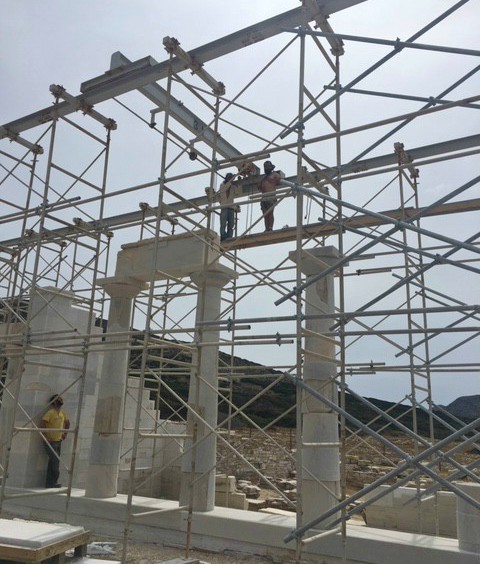 You’ve mentioned before that in order to continue the excavation you are in need of financing. How do you usually gather the funds? Are there private sponsors and, if yes, are they predominantly foreign or Greek citizens? Do tourists who visit the sanctuary offer exposure, therefore attracting potential investors?
You’ve mentioned before that in order to continue the excavation you are in need of financing. How do you usually gather the funds? Are there private sponsors and, if yes, are they predominantly foreign or Greek citizens? Do tourists who visit the sanctuary offer exposure, therefore attracting potential investors?
Most sponsors are Greek; there are some foreigners too, but not tourists. We do receive funding from several institutions, including the John S. Latsis Public Benefit Foundation, the A.G. Leventis Foundation, the non-profit cultural organisation Aegeas, the Paul & Alexandra Canellopoulos Foundation, Alpha Bank and others.
How difficult was it to attract sponsors for this restoration, taking into consideration the multitude of important archaeological sites that are also in need of restoration?
Not that difficult really, as people who contribute financially have realised that this is something that needs to be done to restore an important archaeological site, as well as something that will increase the already existing benefits to the local population.
What about the Despotiko field school? Is it addressed exclusively to students from the USA?
No, the field school is not exclusively addressed to students from the USA. We have students from all over the world, including Brazil, Argentina and European countries. Also, the non-profit educational institution CYA – College Year in Athens brings a lot of American students to Despotiko.
You have ensured the inclusion in your team of the best marble crafters (same of which have also worked at the Acropolis) for the restoration of the site. Do you feel that the restoration of Despotiko is your biggest bet right now?
I believe that this is an extremely complex restoration process with many difficulties, including challenges posed by the fact that it is an uninhabited island with no transportation services etc, which make it a truly colossal task.
*Interview by Markella Chatzilamprou
Read also via Greek News Agenda: Antony Gormley installation on the island of Delos; Professor Michael Scott: By studying the ancient Greeks we learn more about ourselves; Four shipwrecks to become underwater museums; Discover Cape Sounion
TAGS: ARCHEOLOGY | HERITAGE | HISTORY | INTERNATIONAL RELATIONS

